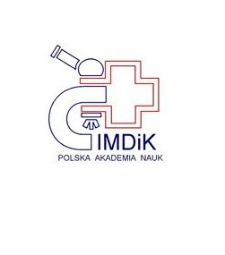- Search in all Repository
- Literature and maps
- Archeology
- Mills database
- Natural sciences
Advanced search
Advanced search
Advanced search
Advanced search
Advanced search

Object
Title: Zmiany w ośrodkowym układzie nerwowym w stanach mocznicowych
Publisher:
Państwowy Zakład Wydawnictw Lekarskich
Place of publishing:
Type of object:
Abstract:
Kliniczne zespoły neurologiczne, występujące w przebiegu uremii, są niekiedy tak bogate objawowo, że wydają się stanowić rażącą sprzeczność z makroskopowym obrazem sekcyjnym mózgu. Weryfikacja anatomiczna przynosi zazwyczaj w tych przypadkach, mało mówiące rozpoznanie obrzęku mózgu, obok mniej lub bardziej nasilonych zmian w układzie naczyniowym. Związane są one albo ze stanem wypełnienia sieci naczyniowej, albo z mniejszym lub większym uszkodzeniem miażdżycowym ścian naczyniowych. Współistnienie miażdżycy wikła ocenę wpływu na stan tkanki mózgowej, zwiększonej ilości ciał azotowych we krwi. ; The second case concerns a73-year- old male patient. Uremia was presumably connected with hydronephrosis caused by urinary retention due to prostatic adenomas. The changes in the brain in this case were few, with predominance of edema and moderate atherosclerotic lesions. In the third case, that of a 24-year-old male patient, uremia developed as a result of bilateral destruction of the kidneys by a tuberculous process. The morphological findings in the brain closely resembled those of typical uremic encephalopathy. In all three cases uremia was the result of renal disease, but the pathogenetic mechanism was different in each case. In the opinion of the authors, different pathogenetic mechanisms may be the reason for the different morphological changes in the central nervous system. Other important factors affecting the morphological character of the cerebral changes include duration of the uremic process, intensity of the disorders in the electrolyte and water balance of the body, condition of the nervous tissue at the time ofd evelopment of uremia (age of the patient), and presence of various coexisting factors. In the first case the additional factor consisted in inflammatory changes of the nature of encephalitis allergica, which, according to the authors, is connected with the allergic mechanism of glomerulonephritis. Presumably, various factors coexisting with uremia offer an explanation of the differences and diversity of the clinical neurological pictures of uremia, while the morphological changes in the brain are monotonous and few.
Relation:
Volume:
Issue:
Start page:
End page:
Detailed Resource Type:
Format:
Resource Identifier:
Language:
Language of abstract:
Rights:
Licencja Creative Commons Uznanie autorstwa 4.0
Terms of use:
Zasób chroniony prawem autorskim. [CC BY 4.0 Międzynarodowe] Korzystanie dozwolone zgodnie z licencją Creative Commons Uznanie autorstwa 4.0, której pełne postanowienia dostępne są pod adresem: ; -
Digitizing institution:
Instytut Medycyny Doświadczalnej i Klinicznej im. M. Mossakowskiego Polskiej Akademii Nauk
Original in:
Biblioteka Instytutu Medycyny Doświadczalnej i Klinicznej im. M. Mossakowskiego PAN
Projects co-financed by:
Access:
Object collections:
- Digital Repository of Scientific Institutes > Partners' collections > Mossakowski Medical Research Institute PAS > Publications of the Institute employees
- Digital Repository of Scientific Institutes > Literature > Journals/Articles
Last modified:
Feb 1, 2022
In our library since:
Apr 24, 2019
Number of object content downloads / hits:
824
All available object's versions:
https://rcin.org.pl./publication/92175
Show description in RDF format:
Show description in RDFa format:
Show description in OAI-PMH format:
| Edition name | Date |
|---|---|
| Osetowska, Ewa, 1963, Zmiany w ośrodkowym układzie nerwowym w stanach mocznicowych | Feb 1, 2022 |
Objects Similar
Krajewski, Stanisław
Liberski, Paweł P Mossakowski, Mirosław Jan (1929–2001)
Mossakowski, Mirosław Jan (1929–2001) Zelman, Irmina Barbara (1927–2010)
Mossakowski, Mirosław Jan (1929–2001)
Mossakowski, Mirosław Jan (1929–2001)
Mossakowski, Mirosław Jan (1929–2001) Kraśnicka, Zuzanna Kassur, Bertold Olejnik, Zbigniew
Zelman, Irmina Barbara (1927–2010) Mossakowski, Mirosław Jan (1929–2001)
Śmiałek, Mieczysław Mossakowski, Mirosław Jan (1929–2001)

 INSTYTUT ARCHEOLOGII I ETNOLOGII POLSKIEJ AKADEMII NAUK
INSTYTUT ARCHEOLOGII I ETNOLOGII POLSKIEJ AKADEMII NAUK
 INSTYTUT BADAŃ LITERACKICH POLSKIEJ AKADEMII NAUK
INSTYTUT BADAŃ LITERACKICH POLSKIEJ AKADEMII NAUK
 INSTYTUT BADAWCZY LEŚNICTWA
INSTYTUT BADAWCZY LEŚNICTWA
 INSTYTUT BIOLOGII DOŚWIADCZALNEJ IM. MARCELEGO NENCKIEGO POLSKIEJ AKADEMII NAUK
INSTYTUT BIOLOGII DOŚWIADCZALNEJ IM. MARCELEGO NENCKIEGO POLSKIEJ AKADEMII NAUK
 INSTYTUT BIOLOGII SSAKÓW POLSKIEJ AKADEMII NAUK
INSTYTUT BIOLOGII SSAKÓW POLSKIEJ AKADEMII NAUK
 INSTYTUT CHEMII FIZYCZNEJ PAN
INSTYTUT CHEMII FIZYCZNEJ PAN
 INSTYTUT CHEMII ORGANICZNEJ PAN
INSTYTUT CHEMII ORGANICZNEJ PAN
 INSTYTUT FILOZOFII I SOCJOLOGII PAN
INSTYTUT FILOZOFII I SOCJOLOGII PAN
 INSTYTUT GEOGRAFII I PRZESTRZENNEGO ZAGOSPODAROWANIA PAN
INSTYTUT GEOGRAFII I PRZESTRZENNEGO ZAGOSPODAROWANIA PAN
 INSTYTUT HISTORII im. TADEUSZA MANTEUFFLA POLSKIEJ AKADEMII NAUK
INSTYTUT HISTORII im. TADEUSZA MANTEUFFLA POLSKIEJ AKADEMII NAUK
 INSTYTUT JĘZYKA POLSKIEGO POLSKIEJ AKADEMII NAUK
INSTYTUT JĘZYKA POLSKIEGO POLSKIEJ AKADEMII NAUK
 INSTYTUT MATEMATYCZNY PAN
INSTYTUT MATEMATYCZNY PAN
 INSTYTUT MEDYCYNY DOŚWIADCZALNEJ I KLINICZNEJ IM.MIROSŁAWA MOSSAKOWSKIEGO POLSKIEJ AKADEMII NAUK
INSTYTUT MEDYCYNY DOŚWIADCZALNEJ I KLINICZNEJ IM.MIROSŁAWA MOSSAKOWSKIEGO POLSKIEJ AKADEMII NAUK
 INSTYTUT PODSTAWOWYCH PROBLEMÓW TECHNIKI PAN
INSTYTUT PODSTAWOWYCH PROBLEMÓW TECHNIKI PAN
 INSTYTUT SLAWISTYKI PAN
INSTYTUT SLAWISTYKI PAN
 SIEĆ BADAWCZA ŁUKASIEWICZ - INSTYTUT TECHNOLOGII MATERIAŁÓW ELEKTRONICZNYCH
SIEĆ BADAWCZA ŁUKASIEWICZ - INSTYTUT TECHNOLOGII MATERIAŁÓW ELEKTRONICZNYCH
 MUZEUM I INSTYTUT ZOOLOGII POLSKIEJ AKADEMII NAUK
MUZEUM I INSTYTUT ZOOLOGII POLSKIEJ AKADEMII NAUK
 INSTYTUT BADAŃ SYSTEMOWYCH PAN
INSTYTUT BADAŃ SYSTEMOWYCH PAN
 INSTYTUT BOTANIKI IM. WŁADYSŁAWA SZAFERA POLSKIEJ AKADEMII NAUK
INSTYTUT BOTANIKI IM. WŁADYSŁAWA SZAFERA POLSKIEJ AKADEMII NAUK


































